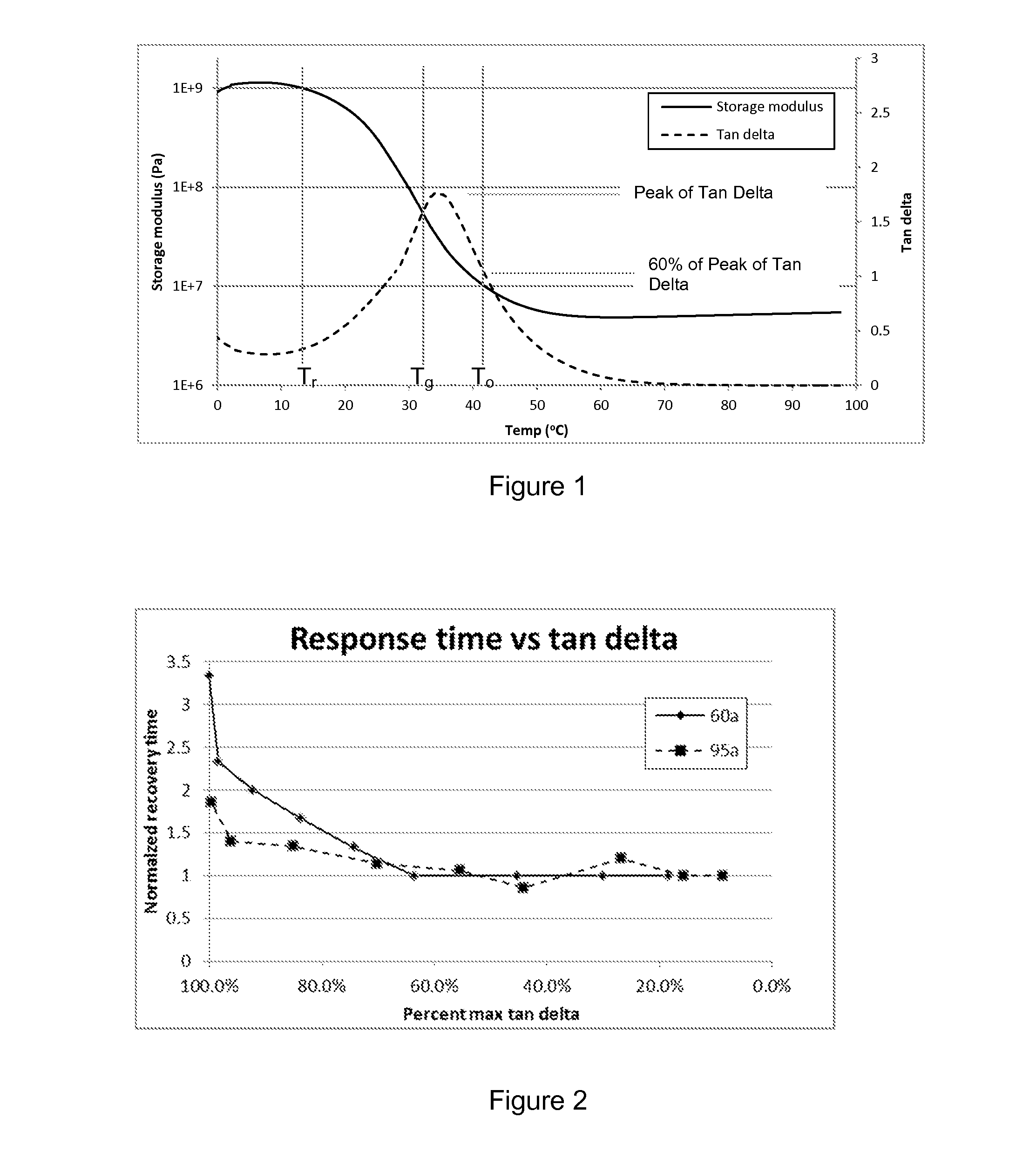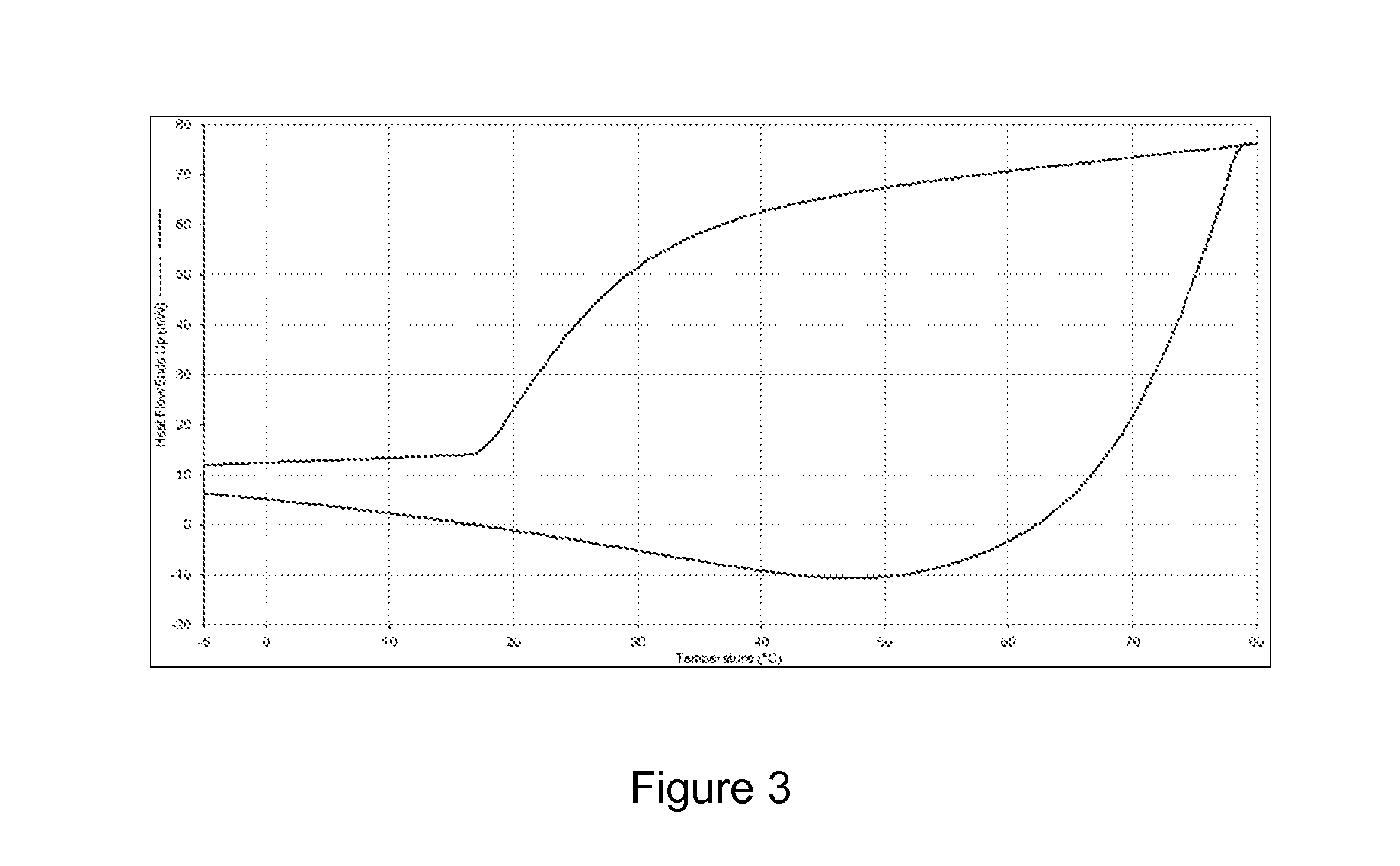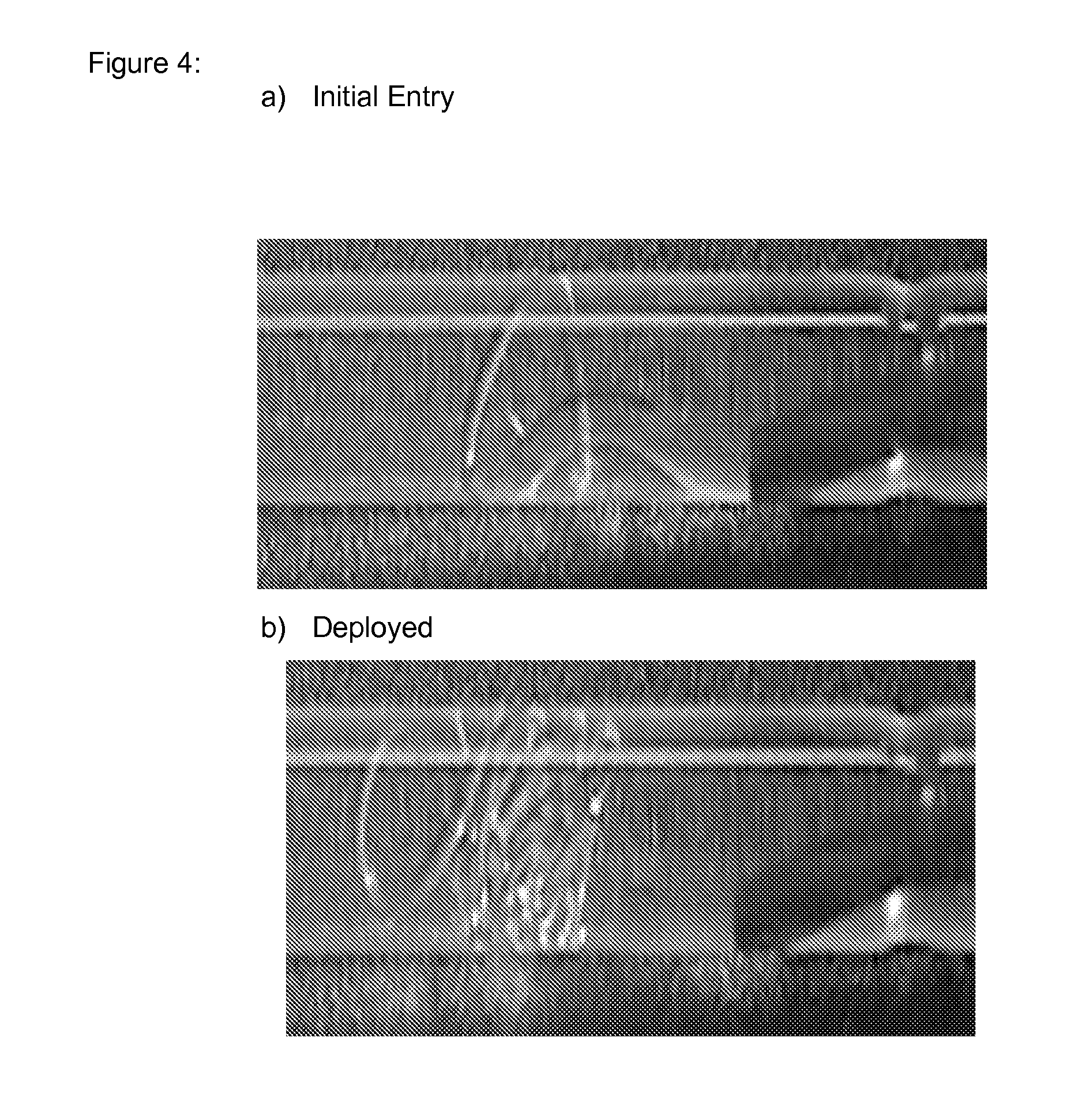Radiopaque shape memory polymers for medical devices
a technology of shape memory and medical devices, applied in the field of radiopaque shape memory polymers for medical devices, can solve the problems of inability to meet patient needs, inability to perform clinically acceptable devices, and inability to change shape, etc., and achieve the effect of rapid respons
- Summary
- Abstract
- Description
- Claims
- Application Information
AI Technical Summary
Benefits of technology
Problems solved by technology
Method used
Image
Examples
example 1
Water Uptake of Radiopaque SMPs with Hydrophilic and Hydrophobic Crosslinkers
[0104]All polymers tested included the iodinated monomer of Formula 15 (TIA). Compositions with hydrophilic poly(ethylene glycol) dimethacrylate (PEGDMA) (MW 550 and 1000) or poly(ethylene glycol) diacrylate (PEGDA) (MW 575 and 700) crosslinkers were demonstrated to result in water absorption in test samples of more than 1% by weight in a 24 hour period. Subsequent continuous exposure resulted in material changes such as brittleness and eventual mechanical failure in standard testing. Conversely, in a different embodiment, use of hydrophobic crosslinker or crosslinkers, such as poly(tetrahydrofuran) (PTHF) or the monomer of formula 9 with R9 being C10 (C10-DA), was demonstrated to result in very low water absorption, below 1% by weight in a 24 hour period. Similarly, these materials incorporating hydrophobic crosslinkers have shown negligible deterioration with continued exposure to an aqueous environment.
example 2
DSC Measurements on a Radiopaque SMP
[0105]FIG. 3 illustrates a DSC curve for an radiopaque SMP formulation employing “TIA” monomer (Formula 15) and decanedioldiacryalate (DDA) crosslinker. FIG. 3 indicates that no crystalline features were observed in the scan.
example 3
Exemplary Radiopaque Polymer Devices
[0106]Shape memory polymer devices of the invention can incorporate material formulations that utilize a suitable glass transition temperature within a range about body core temperature. To achieve different performance requirements, the polymer's Tg may be intentionally suppressed below body temperature resulting in shape change occurrence immediately upon release from any physical constriction.
[0107]In one embodiment, an SMP with a Tg of 25° C. has been utilized to accelerate the rate of shape change of an embolic coil upon expulsion from a small lumen catheter. One form of embolic devices forms a large curl of 10 mm in diameter but is constructed of an SMP wire that is only 0.032″ in diameter. The wire can be formed into a pre-deployed curled shape that is straightened to allow delivery of these devices in a small diameter catheter (a-b show images embolic coils exit from very thin, single lumen catheters to form an occlusive mass much larger t...
PUM
| Property | Measurement | Unit |
|---|---|---|
| temperature | aaaaa | aaaaa |
| temperature | aaaaa | aaaaa |
| temperature | aaaaa | aaaaa |
Abstract
Description
Claims
Application Information
 Login to View More
Login to View More - R&D
- Intellectual Property
- Life Sciences
- Materials
- Tech Scout
- Unparalleled Data Quality
- Higher Quality Content
- 60% Fewer Hallucinations
Browse by: Latest US Patents, China's latest patents, Technical Efficacy Thesaurus, Application Domain, Technology Topic, Popular Technical Reports.
© 2025 PatSnap. All rights reserved.Legal|Privacy policy|Modern Slavery Act Transparency Statement|Sitemap|About US| Contact US: help@patsnap.com



